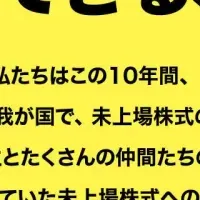
The Surge in Gold Prices: How Global Forces and Political Uncertainty Are Impacting Markets
In a remarkable turn of events, gold has reached a staggering price of $2794.011 per troy ounce, marking its all-time high in US dollar terms. This surge, which represents a remarkable 41% increase over the past year, has captured the attention of investors and analysts alike. While the re-emergence of former President Donald Trump onto the global political stage is a contributing factor, a myriad of other elements are also at play, influencing the gold market.
The current political climate, characterized by uncertainty and volatility, has made gold an increasingly attractive asset. Trump's policies during his first term, which focused on 'America First', significantly reshaped international trade, altering alliances and contributing to rising inflation. Now, as we step into the era of 'Trump 2.0', concerns about renewed tariffs, the weaponization of the dollar, as well as geopolitical turmoil, have only intensified. Such fears of instability have historically led investors toward gold, seen as the ultimate safe-haven asset amidst market fluctuations.
On the international front, the ongoing conflict in Ukraine has reached new levels, further driving up the demand for gold. The situation has escalated with the deployment of long-range missiles and renewed artillery strikes, leading to massive destruction and significant loss of life. The war has also disrupted energy markets across Europe, with nations scrambling to secure alternative fuel sources. As Russia continues to escalate its military capabilities, fears of broader conflict and unrest loom large. This anxiety serves to bolster gold's safe-haven status for investors looking to mitigate risk against escalating geopolitical tensions.
Moreover, tensions in the Middle East further contribute to the growing appeal of gold. Instability in these regions often provokes investor caution, leading individuals and institutions to consider gold as a hedge against potential economic and political fallout. Paul Williams, managing director at Solomon Global, highlights that the compelling nature of gold's recent performance is tied to a complex web of global factors affecting the modern economy, stating, "This is not just a temporary spike or a 'Trump Bump' but rather a signal of an uncertain geopolitical landscape along with underlying instability in the global economy."
This environment of uncertainty is reflected not just in rising gold prices but also in the overall market sentiment. Investors are increasingly recognizing the fundamental shifts in global economic dynamics, prompting a re-evaluation of asset allocations. In response, many are turning to gold not merely to safeguard their wealth but as a strategic move in response to the shifting world order, which increasingly appears volatile.
Solomon Global, a specialist supplier of LBMA-approved gold and silver products, provides insight into these dynamics, emphasizing its consultative approach to gold investment. The organization aims to cater to both novice and experienced investors, proving that regardless of investment amount, there are accessible pathways to secure precious assets. From tax-exempt products to consultation services, Solomon Global ensures that clients are well-equipped to navigate the complex landscape of physical investment in gold and silver.
As we examine the broader implications of these escalating prices, it’s essential to remember that the journey of gold is not solely dictated by one individual's influence or a single economic event. Instead, it reflects a perfect storm of international tensions, economic realities, and the enduring appeal of gold as a stable investment during times of crisis. As uncertainty continues to permeate the global markets, the story of gold will likely evolve, making it a focal point for investors seeking not just profit but security in their portfolios. As the world watches these developments unfold, one can only speculate on how high this precious metal will climb before the tides of uncertainty change once again.
The current political climate, characterized by uncertainty and volatility, has made gold an increasingly attractive asset. Trump's policies during his first term, which focused on 'America First', significantly reshaped international trade, altering alliances and contributing to rising inflation. Now, as we step into the era of 'Trump 2.0', concerns about renewed tariffs, the weaponization of the dollar, as well as geopolitical turmoil, have only intensified. Such fears of instability have historically led investors toward gold, seen as the ultimate safe-haven asset amidst market fluctuations.
On the international front, the ongoing conflict in Ukraine has reached new levels, further driving up the demand for gold. The situation has escalated with the deployment of long-range missiles and renewed artillery strikes, leading to massive destruction and significant loss of life. The war has also disrupted energy markets across Europe, with nations scrambling to secure alternative fuel sources. As Russia continues to escalate its military capabilities, fears of broader conflict and unrest loom large. This anxiety serves to bolster gold's safe-haven status for investors looking to mitigate risk against escalating geopolitical tensions.
Moreover, tensions in the Middle East further contribute to the growing appeal of gold. Instability in these regions often provokes investor caution, leading individuals and institutions to consider gold as a hedge against potential economic and political fallout. Paul Williams, managing director at Solomon Global, highlights that the compelling nature of gold's recent performance is tied to a complex web of global factors affecting the modern economy, stating, "This is not just a temporary spike or a 'Trump Bump' but rather a signal of an uncertain geopolitical landscape along with underlying instability in the global economy."
This environment of uncertainty is reflected not just in rising gold prices but also in the overall market sentiment. Investors are increasingly recognizing the fundamental shifts in global economic dynamics, prompting a re-evaluation of asset allocations. In response, many are turning to gold not merely to safeguard their wealth but as a strategic move in response to the shifting world order, which increasingly appears volatile.
Solomon Global, a specialist supplier of LBMA-approved gold and silver products, provides insight into these dynamics, emphasizing its consultative approach to gold investment. The organization aims to cater to both novice and experienced investors, proving that regardless of investment amount, there are accessible pathways to secure precious assets. From tax-exempt products to consultation services, Solomon Global ensures that clients are well-equipped to navigate the complex landscape of physical investment in gold and silver.
As we examine the broader implications of these escalating prices, it’s essential to remember that the journey of gold is not solely dictated by one individual's influence or a single economic event. Instead, it reflects a perfect storm of international tensions, economic realities, and the enduring appeal of gold as a stable investment during times of crisis. As uncertainty continues to permeate the global markets, the story of gold will likely evolve, making it a focal point for investors seeking not just profit but security in their portfolios. As the world watches these developments unfold, one can only speculate on how high this precious metal will climb before the tides of uncertainty change once again.
Topics Financial Services & Investing)










【About Using Articles】
You can freely use the title and article content by linking to the page where the article is posted.
※ Images cannot be used.
【About Links】
Links are free to use.